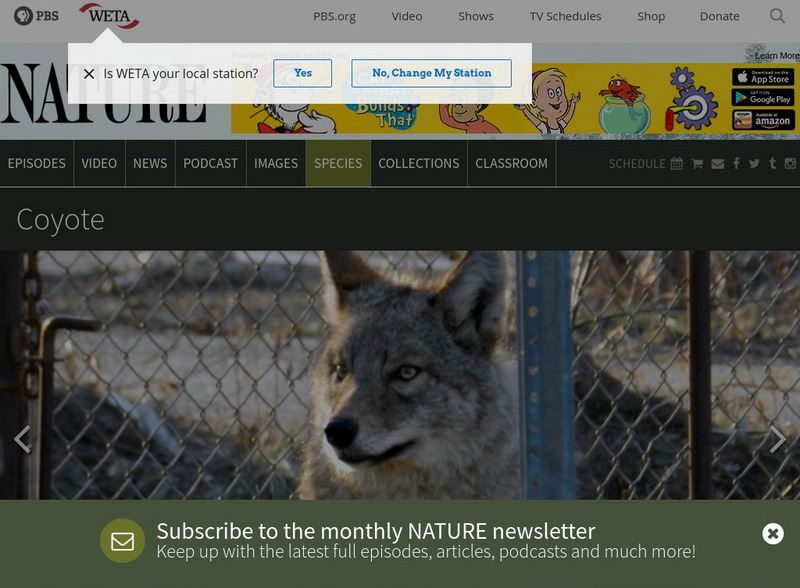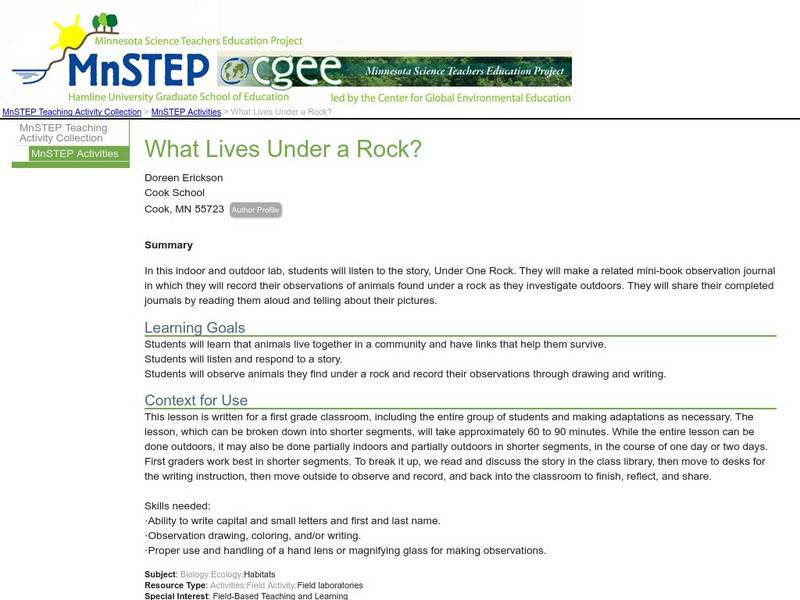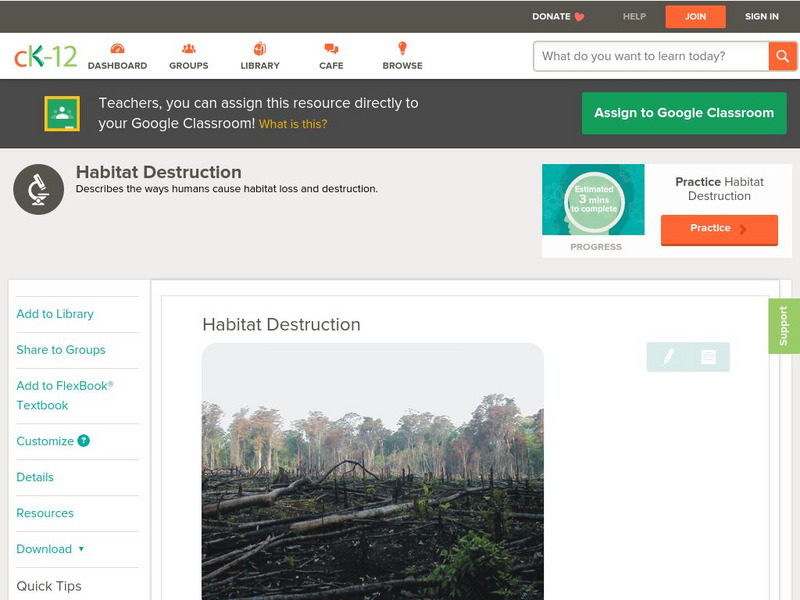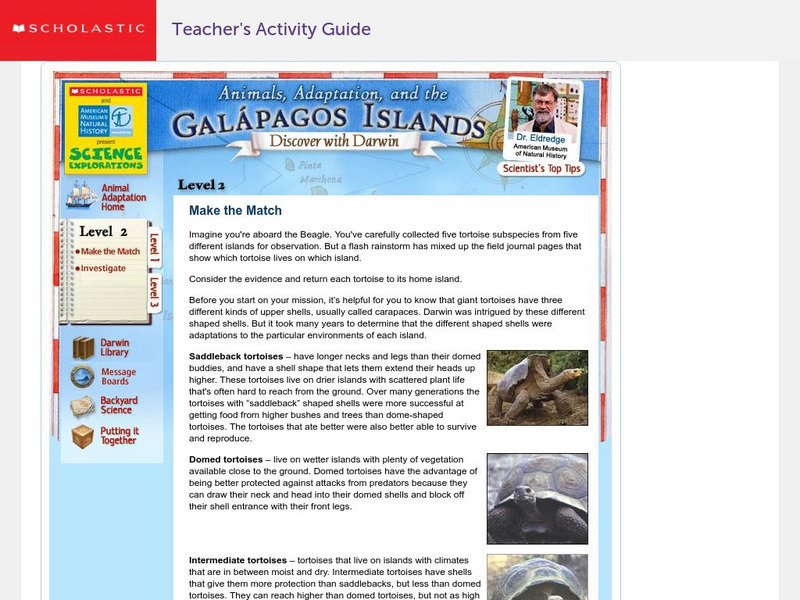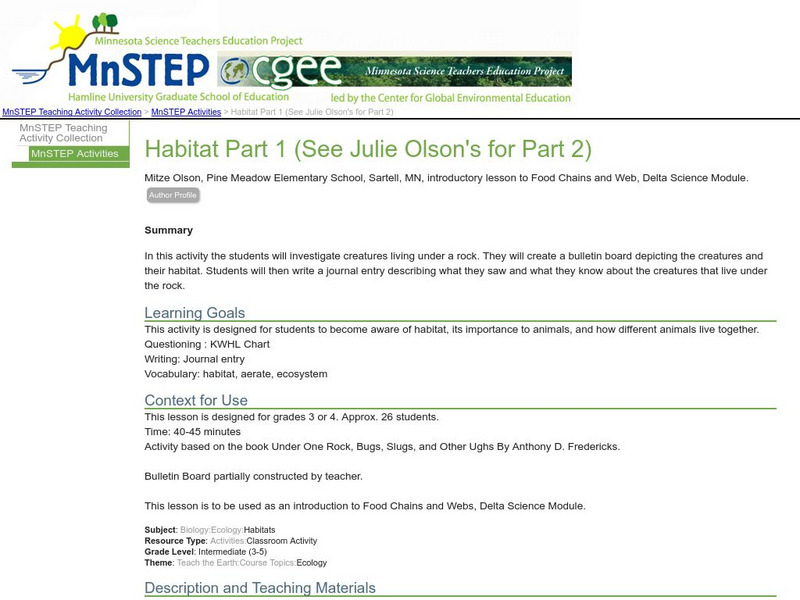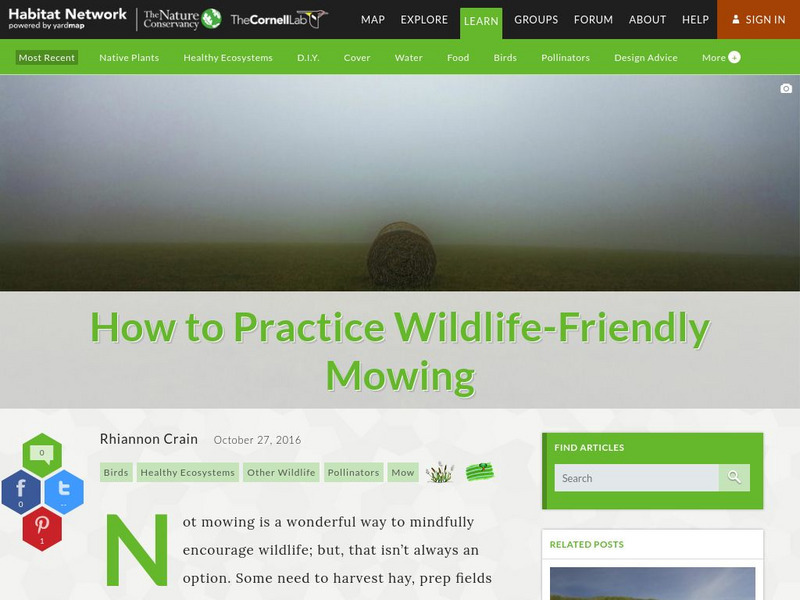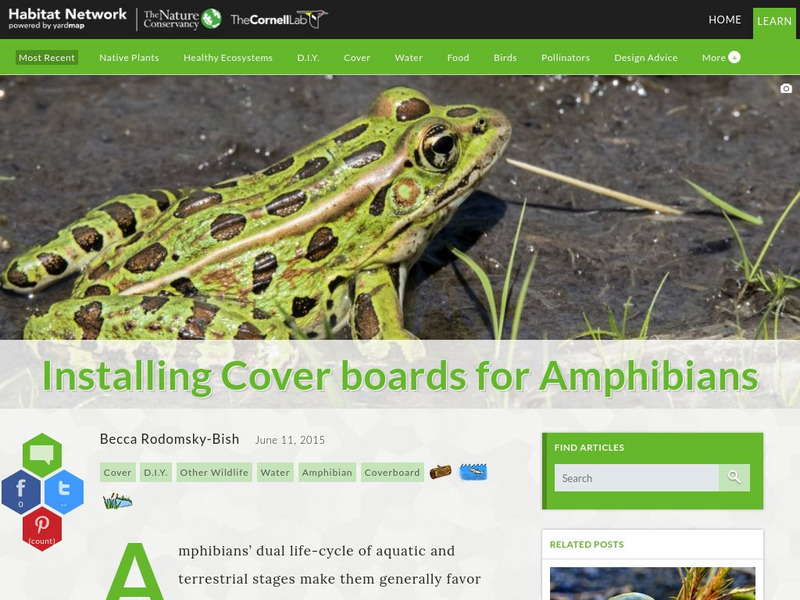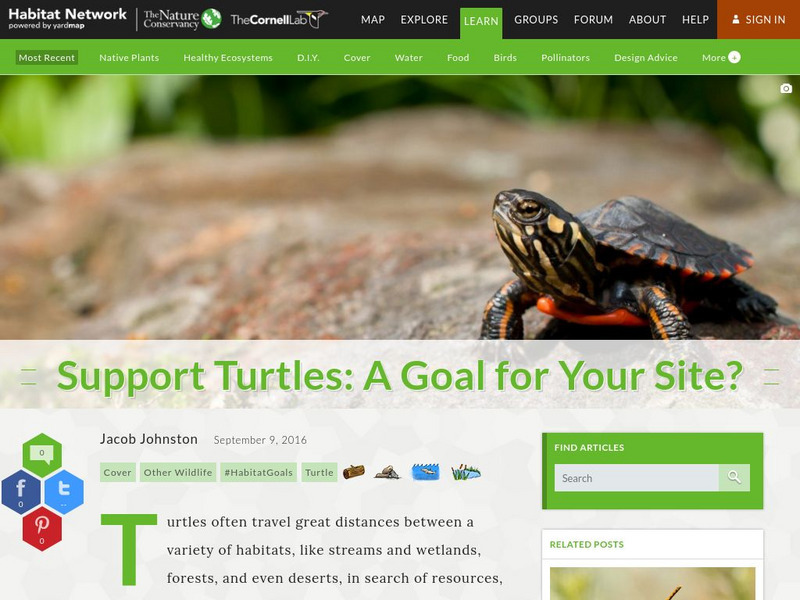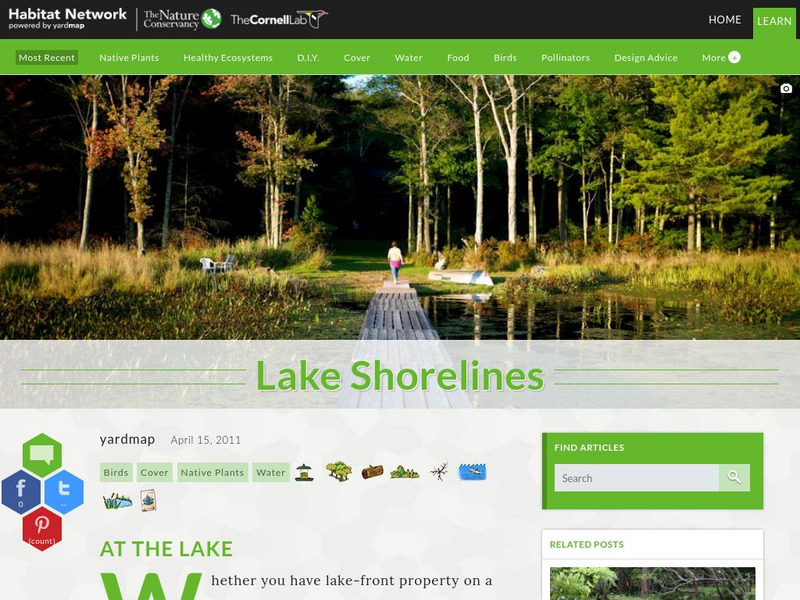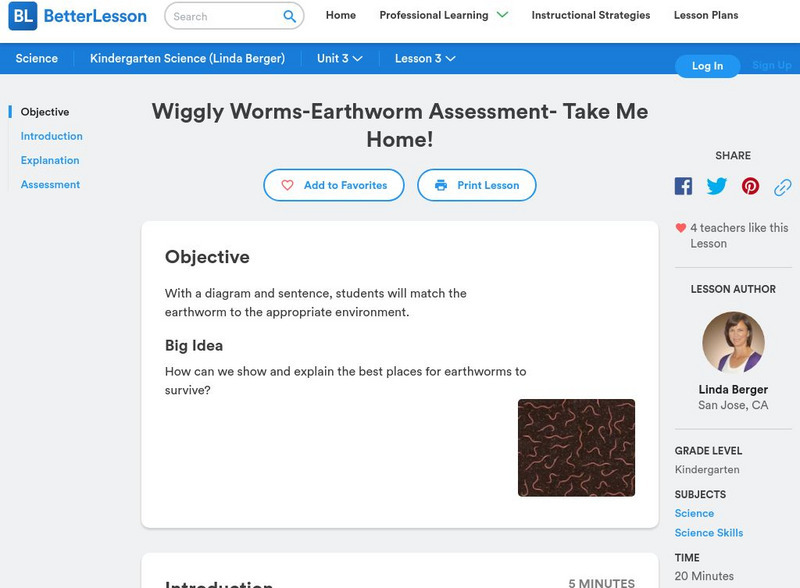Other
Project Wild: Aquatic Times [Pdf]
Teach students to be more aware of issues surrounding aquatic animals and their habitats. Includes lesson, extension activities, and evaluation ideas.
PBS
Pbs Nature: Coyote
What do you know about coyotes? Learn more about how adaptable this animal is to new surroundings when you check out this informative resource. Explore this website to find more facts and information ranging from what these animals eat...
SMART Technologies
Smart: Energy Flow in an Ecosystem
Students learn about Abiotic and Biotic Factors and how they affect the ecosystem in which an animal might live in.
Unique Australian Animals
Unique Australian Animal: Turquoisine Grass Parrot
Enjoy the images of this beautiful bird while learning more about its characteristics and lifestyle.
Science Education Resource Center at Carleton College
Serc: Mn Step: What Lives Under a Rock?
After reading and discussing the book "Under One Rock: Bugs, Slugs, and Other Ughs" by Anthony D. Frederick, learners are equipped with tools for observing nature and are taken on a guided walk. They find a rock to overturn, and record...
Smithsonian Institution
Smithsonian Science Education Center: Showbiz Safari
Lights! Camera! Action! Our movie director needs your help! Help Walrus pick actors based on the traits that best fit the movie role. Which furry mammal will get the most wanted role in the blockbuster film "Paws"? Which water loving...
CK-12 Foundation
Ck 12: Life Science: Habitat Destruction
[Free Registration/Login may be required to access all resource tools.] From a human point of view, a habitat is where you live, go to school, and go to have fun. Your habitat can be altered, and you can easily adapt. Most people live in...
Scholastic
Scholastic: Science Explorations: Make the Match
See if you can match Galapagos Island Tortoises with the particular islands they live on. You can explore the islands to learn more about the habitats they contain.
Texas Instruments
Texas Instruments: Subnivean Comfort
Students measure and compare air temperatures inside and outside a snow shelter. If students choose to sleep in the shelter overnight they use the temperature measurements to confirm what they discover experientially- that snow is a...
Science Education Resource Center at Carleton College
Serc: Habitat Part 1
Young scholars investigate creatures living under a rock and then present their findings on a class display and writing in a journal.
Science Education Resource Center at Carleton College
Serc: Virtual Inquiry Field Lesson
Students use inquiry skills to answer their own questions about an area's animals in a natural setting using motion sensing video cameras.
Other
Brooklyn Expedition: Structures
If you've ever wondered how animals use their homes or what we are made of, this is the place to look. This site from the Brooklyn Children's Museum explores the shared characteristics among animal skeletons and homes, architecture, art...
Cornell Lab of Ornithology
Habitat Network: Habitat Feature: Bat Houses
Find out how providing bat houses can be beneficial to a habaitat.
Cornell Lab of Ornithology
Habitat Network: How to Practice Wildlife Friendly Mowing
When it is time to mow, find out the simple strategies to consider to minimize negative impacts on wildlife.
Cornell Lab of Ornithology
Habitat Network: Habitat Feature: Making Mud
Find out how mud puddles in a backyard ecosystem make for a welcome habitat for many species.
Cornell Lab of Ornithology
Habitat Network: Cats in the Wildlife Garden: Can They Have Cake and Catio Too?
Habitat Network offers one solution to having an indoor or outdoor cat- a cat patio, or catio.
Cornell Lab of Ornithology
Habitat Network: Installing Cover Boards for Reptiles
Learn how to provide a cover board for reptiles who generally prefer drier conditions.
Cornell Lab of Ornithology
Habitat Network: Installing Cover Boards for Amphibians
Find out how to make a cover board for Amphibians' dual life-cycle of aquatic and terrestrial stages.
Cornell Lab of Ornithology
Habitat Network: Support Turtles: A Goal for Your Site?
Find out how a common backyard habitat can become a welcome habitat site for turtles.
Cornell Lab of Ornithology
Habitat Network: Lake Shorelines
Become a citizen scientist, and find out how to turn a shoreline landscape into a bird haven.
Other
Nanoos: Satellite Tracking [Pdf]
In this lesson, learners will be introduced to satellite tracking data. This data allows students to track the movement of marine animals over time. By the end of the lesson, learners will be able to answer questions related to...
Center for Innovation in Engineering and Science Education, Stevens Institute of Technology
Ciese: Square of Life: Ant Day Care Center
For this lesson, students use the engineering design process to create a home for ants where they can be observed for one day.
Cornell Lab of Ornithology
Habitat Network: On a Farm
Learn about the effect that agricultural advancement has had on bird diversity in those environments.
Better Lesson
Better Lesson: Wiggly Worms Earthworm Assessment Take Me Home!
Students will identify and describe the major element of an earthworm's habitat by drawing a diagram and writing a sentence. Included in this lesson is an earthworm habitat worksheet, video of the lesson in action, a grading rubric, and...
Other popular searches
- Powerpoint Animal Habitats
- Animal Habitats in Georgia
- Animal Habitats Math Games
- Animal Habitats Kindergarten
- Plant and Animal Habitats
- Lessons on Animal Habitats
- Animal Habitats Adaptation
- Math Animal Habitats
- Animal Habitats and Zoos
- Animal Habitats Bear
- Animal Habitats Webquest
- Australian Animal Habitats
![Project Wild: Aquatic Times [Pdf] Lesson Plan Project Wild: Aquatic Times [Pdf] Lesson Plan](https://static.lp.lexp.cloud/images/attachment_defaults/resource/large/FPO-knovation.png)
